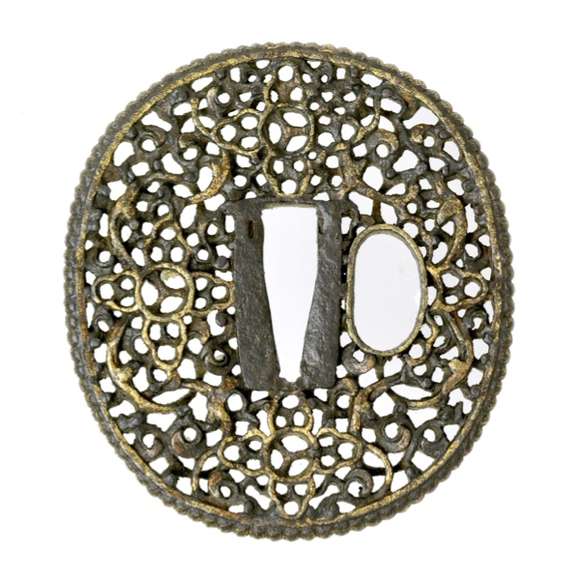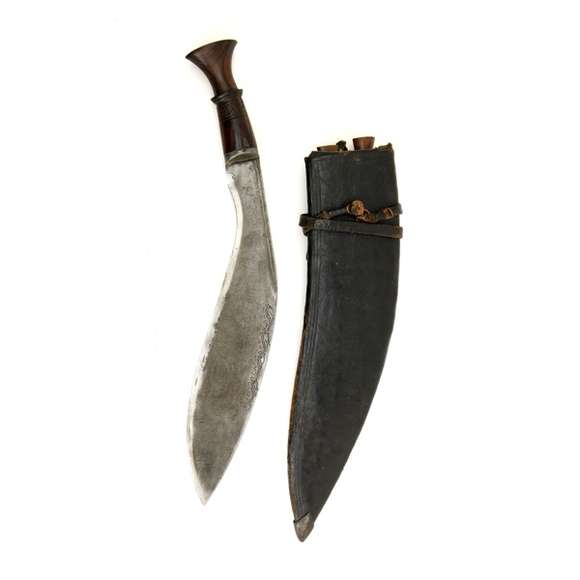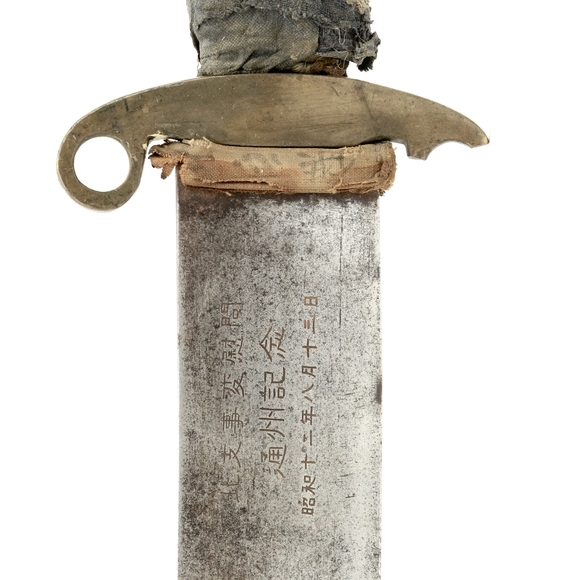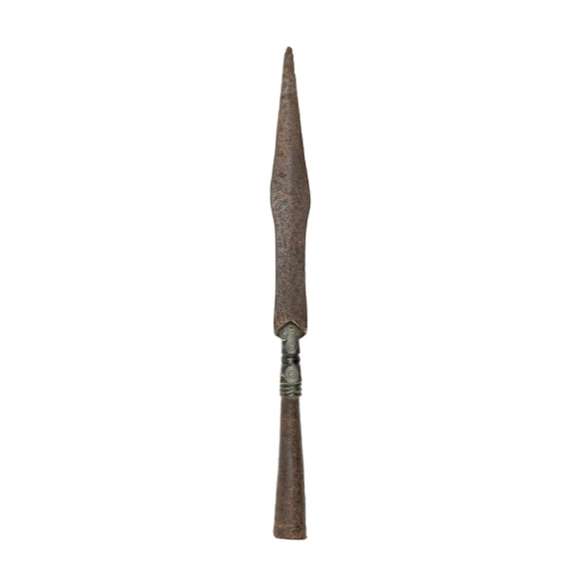A very rare Chinese saber guard dating from the height of the Qing dynasty.

79.7 cm / 31.4 inch
62.2 cm / 24.5 inch
forte 11 mm
middle 5 mm
near tip 2.5 mm
forte 37 mm
middle 30 mm
near tip 18 mm
762 grams
11.8 cm from guard
Southern Chinese, Qing dynasty.
Iron, steel, brass, wood, cotton. Scabbard: Wood, brass, ray-skin.
19th century.
Introduction
The yaodao, literally "waist saber" was the standard side-arm for the Qing dynasty military. Even though the Qing government attempted to regulate their appearance and even methods of manufacture, local armies retained considerable freedom in their equipment and this variation is obvious from the record of antique sabers that survived.
There is a group of sabers that is frequently found with markings attributing them to one of the Eight Banners of the Hanjun, an all-han elite force that was formed by the descendants of the first Ming soldiers that joined the Qing cause. These troops helped the Manchus in their conquest with vital knowledge on firearms, and regulations show that the Hanjun always kept this specialization on firearms.
These southern Hanjun bannerman sabers tend to have other things in common:
1. They almost always have identical hilts in typical yuanshi or "round style" decorated with stylized coins.
2. The guards are often in the shape of a stylized coin, with a bamboo-sectioned rim.
3. The blades are extremely thick at the base, like many hudiedao (butterfly swords), and have one or two narrow grooves and vary from nearly straight to fairly curved. Often with one or more dimples where the grooves start at the forte.
4. They tend to have large integrated collar pieces, tunkou, usually chiseled in the blade but sometimes out of brass sheet.
5. They tend to come in leather scabbards identical to those of other typical southern weapons such as Chinese butterfly swords or single shield swords.
Description
A classic example of a southern Chinese military saber, with thick 11mm (!) thick blade that tapers considerably in width and thickness to give it the lively balance these tend to have. It is of forge folded construction with inserted high carbon steel edge. Blade with two grooves starting just ahead a dimple near the forte. The forte itself is chiseled so a thickened collar is formed, called tunkou in Chinese. The character 勝 (sheng) for victory is stamped on the base of the right side of the blade, something seen on more sabers of this exact type.
The hilt mountings are cast brass, executed in typical sounthern yuanshi or "round style". The fittings are decorated with dotted lines and coin motifs. The guard, itself shapes as a stylized coin, had a bamboo-shaped rim. The original wooden handle retains its original indigo dyed cotton grip, over the years discoloured into a dark green.
The scabbard is atypical for this type: Instead of the usual leather scabbard this example has a ray-skin covered scabbard with brass mounts. The mounts are decorated in relief with scenes of archaic kui dragons. Such mountings are often found on civilian and curio sabers of the 19th century, with blades only 5mm thick. When I first saw the piece I thought the scabbard was associated, but it's a perfect fit to the unusually wide blade.

Comparison of two southern Chinese Hanjun bannerman sabers.
Top: This example with ray-skin covered scabbard with brass mounts.
Bottom: an example from my personal collection.
It retains the standard military issue scabbard these usually come in.
Here's a theory: This piece does not have the military markings common on these, but close inspection shows chisel marks exactly where these should have been. Qing regulations mention that soldier's sabers were expected to last 40 years of service, after which the soldier had the right to a new one and the old one was decommissioned.1 We also know that the number of men registered under the banners were a large burden to the treasure of the Qing, and among the first to be downsized were the Hanjun banners.2

The forte of both sabers. Top: This example, notice the chisel marks and partially faded forte due to removal of steel.
Bottom: The example from my personal collection, marked 漢鑲黃 for "Han Bordered Yellow".
I suspect this saber was decommissioned as a result of either of the above scenarios, after which the banner markings were chiseled away and the saber entered the public market. A new owner may have wanted to replace the leather scabbard for something more durable and had this made in a shop that normally fitted civilian sabers or those for the curio trade. This is the most likely scenario on how this saber lost it's markings and gained a scabbard much more decorative than its simple leather original.

Another southern Chinese bannerman saber we sold last year.
It is probably also a decommissioned piece, with clearly removed markings.
Condition / restoration history
Blade in decent condition, loss of contours and bevels due to previous polishing and sharpening. Some pitting. Edge is in good shape, only one small nick, probably caused by deflecting the edge of another weapon. A previous owner has probably re-attached the suspension bar, as the current rivets are brass and they tend to be iron. I tightened the handle so the guard does not rattle. The grip wrap is in superb condition, but the original wooden grip has shrunk so the cord can move. Beginning and end are still tight, so the cord will not unravel. I also tightened the scabbard fittings. Ray-skin covering in perfect condition, with no losses. The blade is also a tight fit in its scabbard, no movement when sheathed.
Conclusion
A nice example of a typical southern Chinese saber that is usually attributable to the Hanjun, the all-Han Chinese Eight Banners. This piece probably got decommissioned and got an upgraded scabbard somewhere in the course of the 19th century.
NOTES
1See the Qianlong (1791) and Jiaqing (1805) editions of the qinding junqi zeli (欽定軍器則例) or "Imperially Commissioned Regulations and Precedents on Military Equipment" for mentions of steel helmets issued to the various troops under the Eight Banners.
2Mark C. Elliott; The Manchu Way. Stanford University Press, 2001.
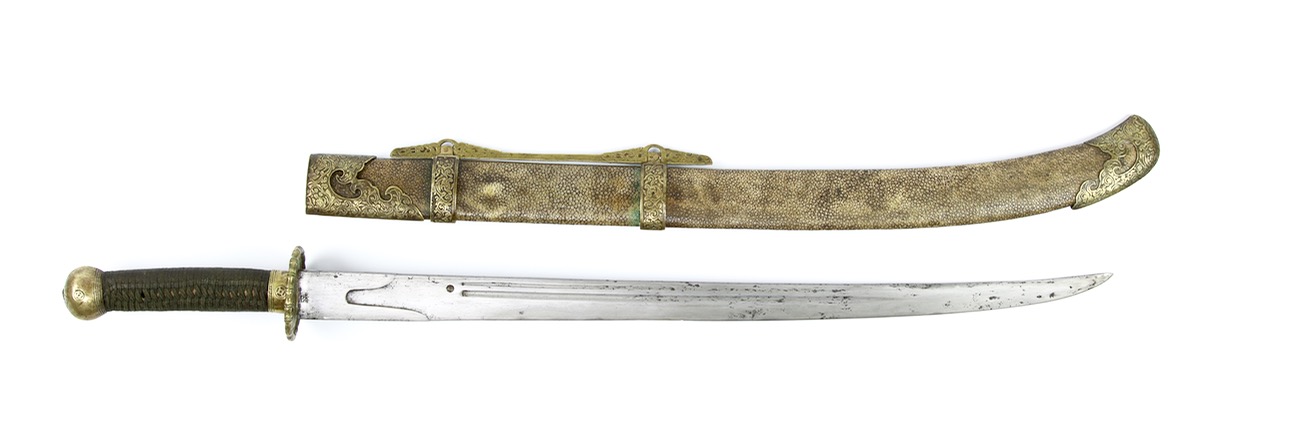
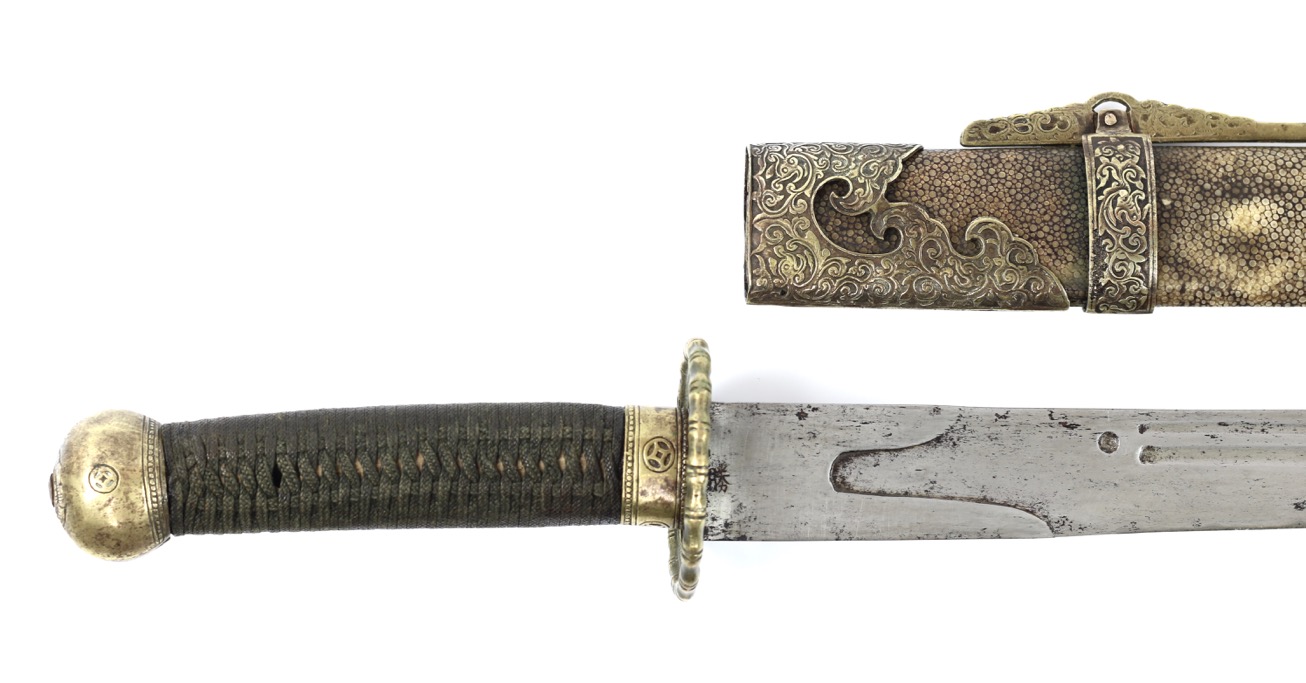
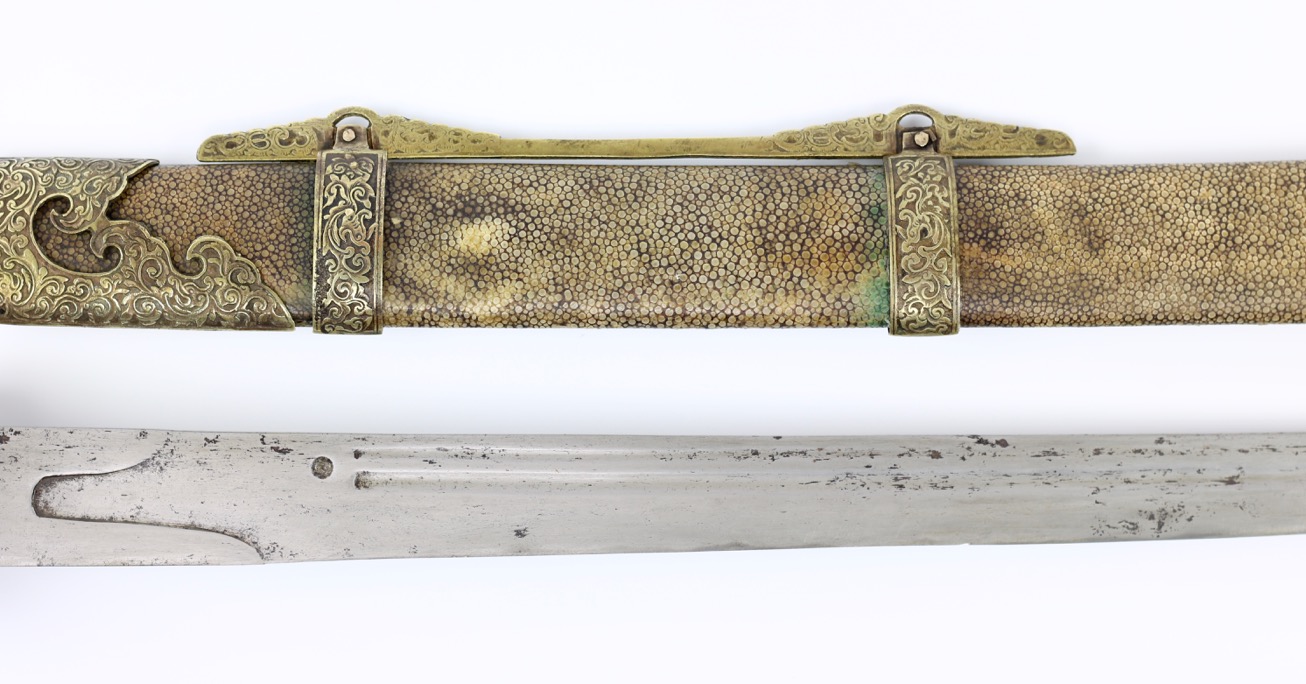



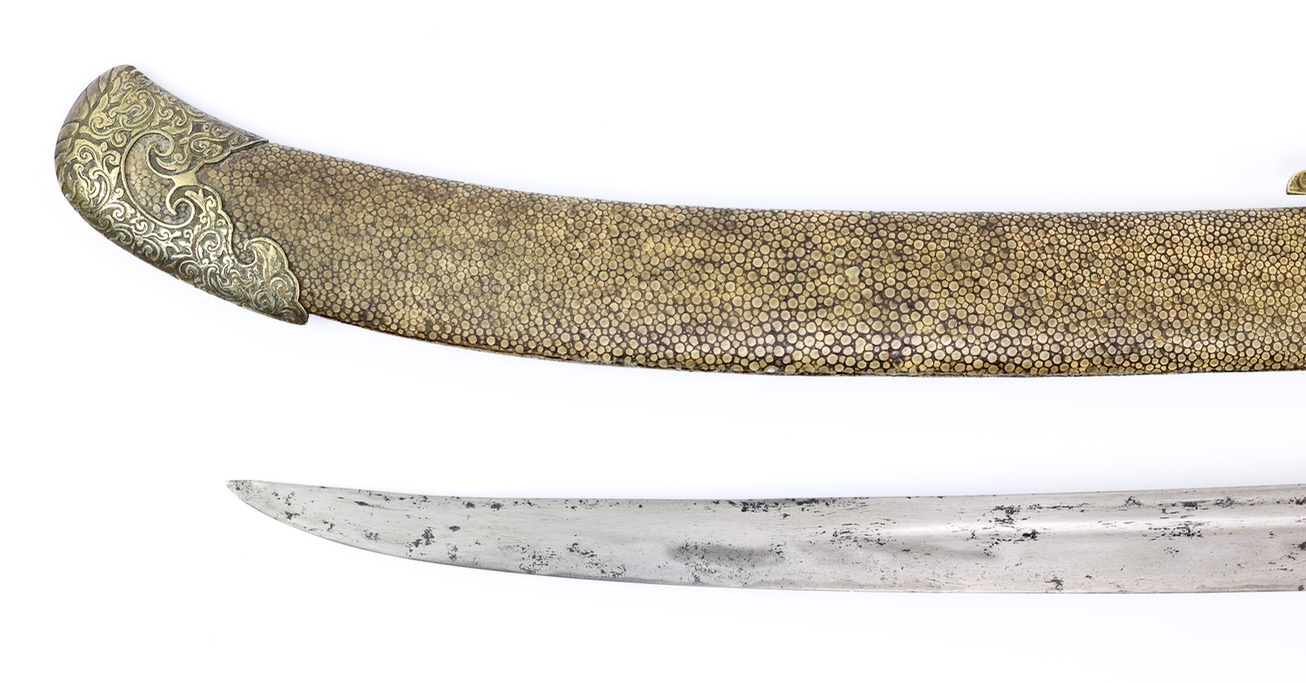
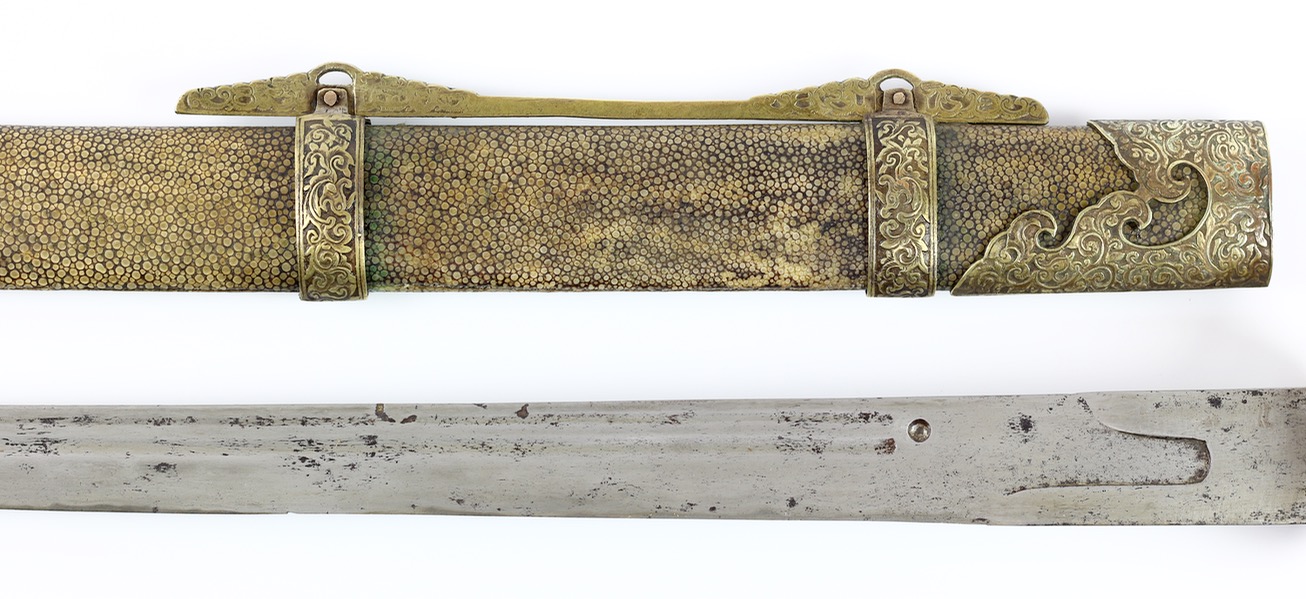


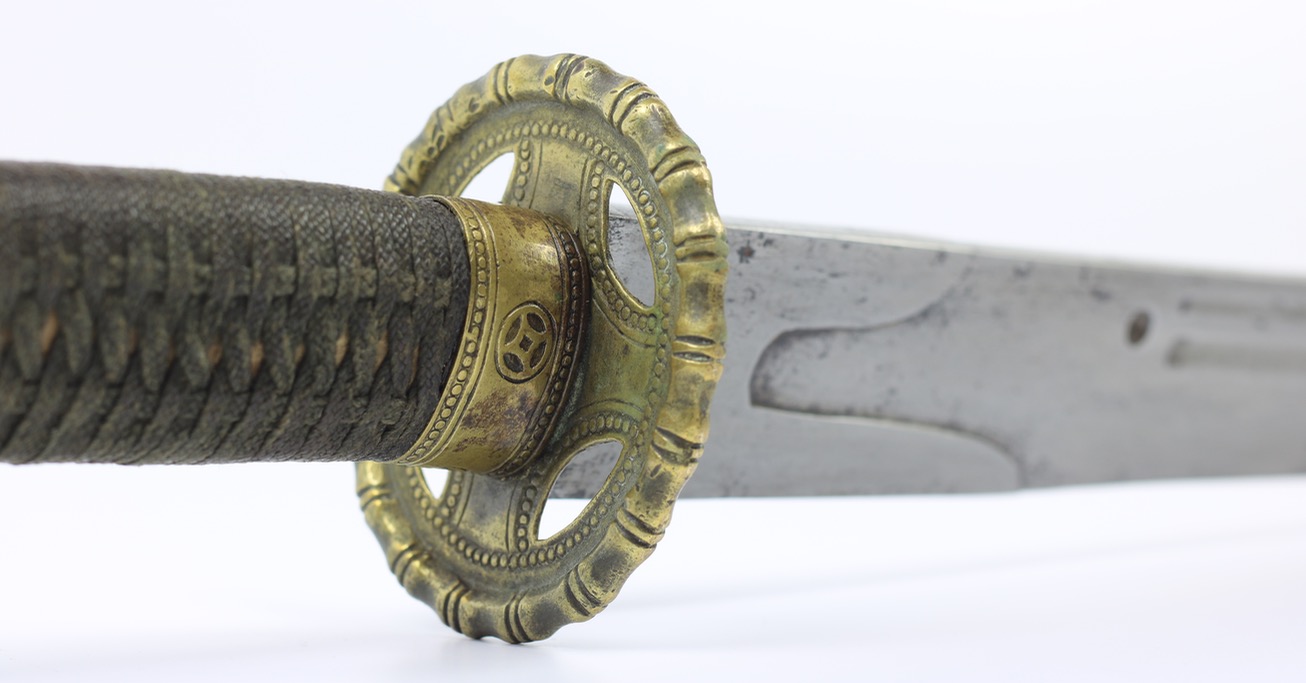
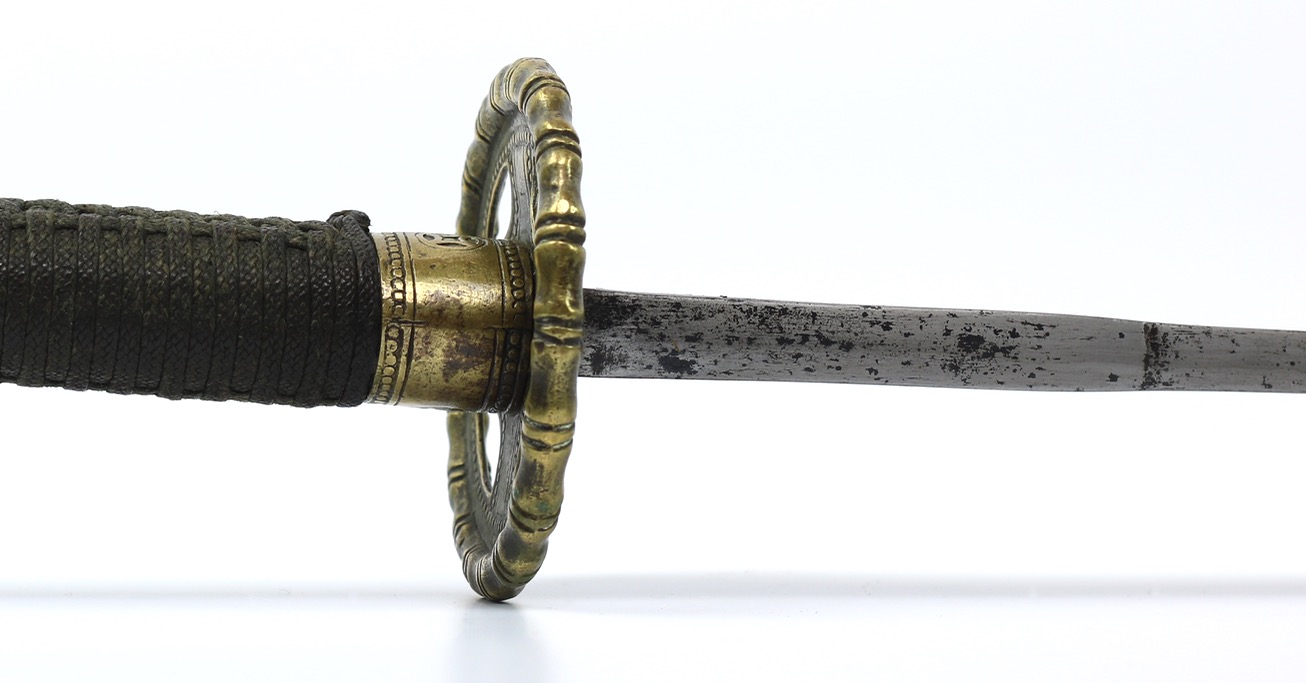
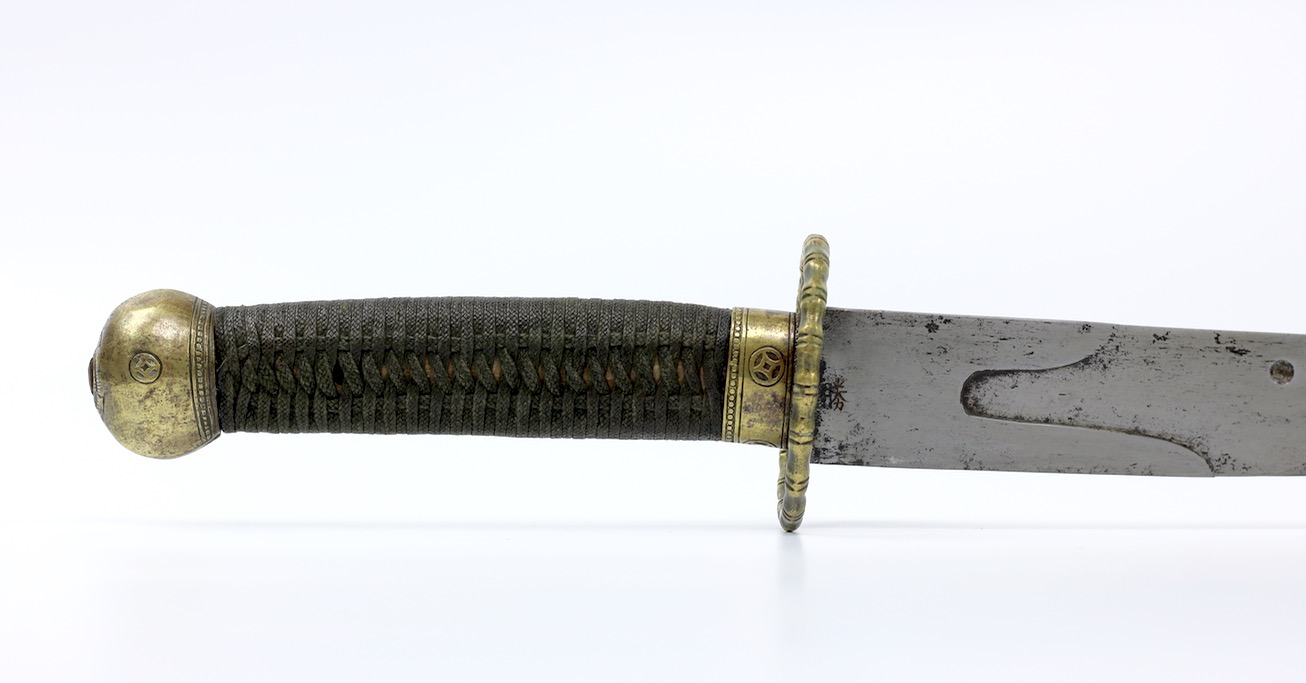

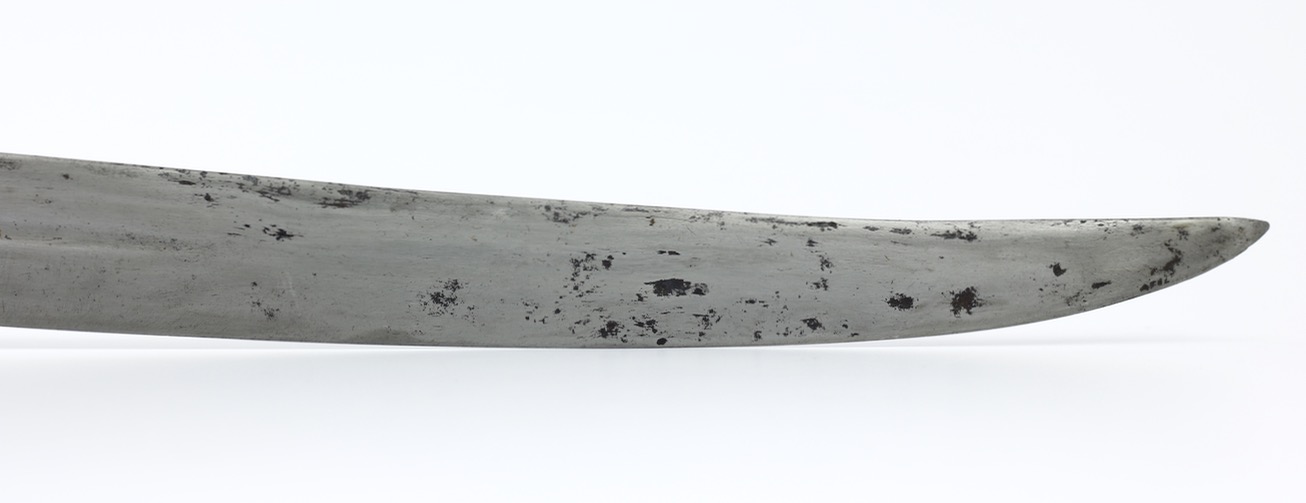

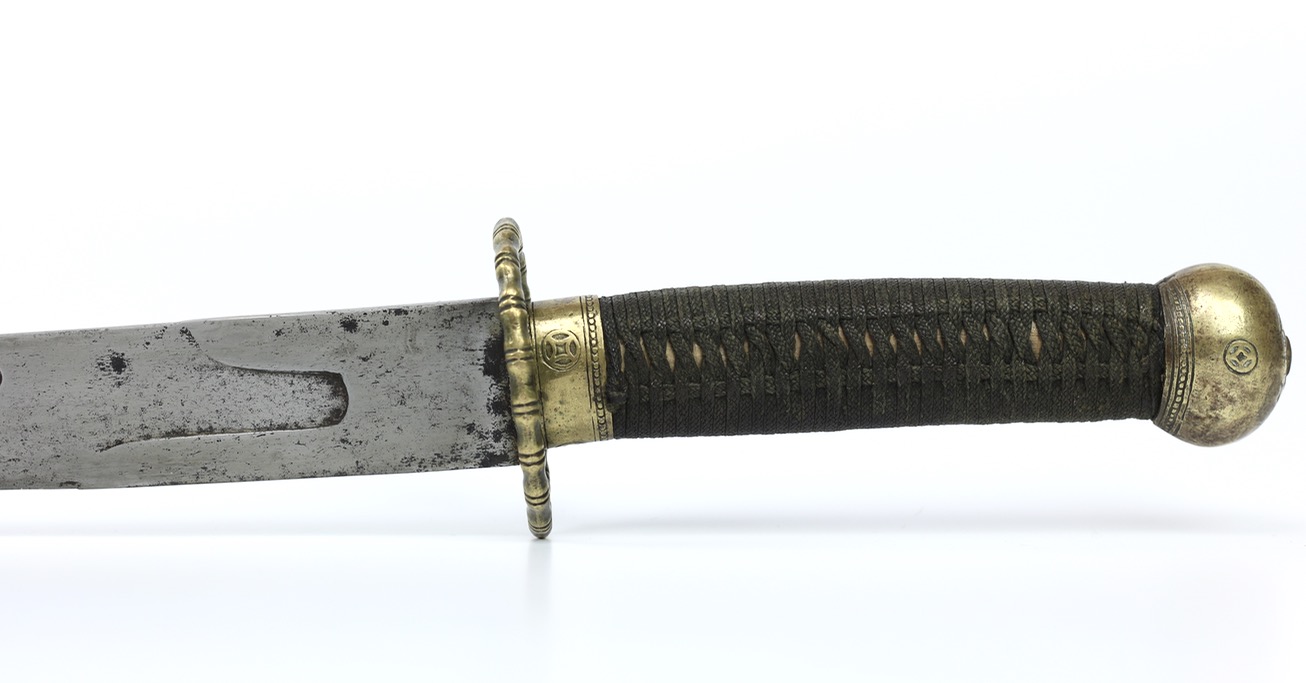

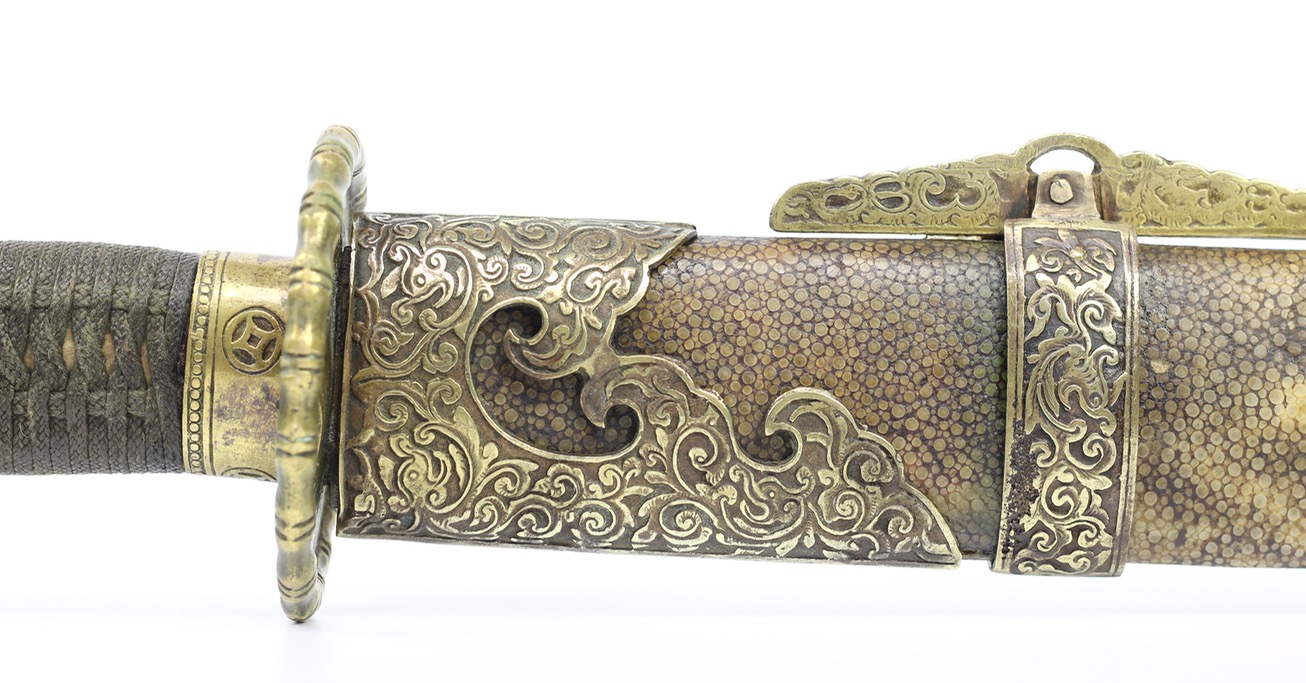


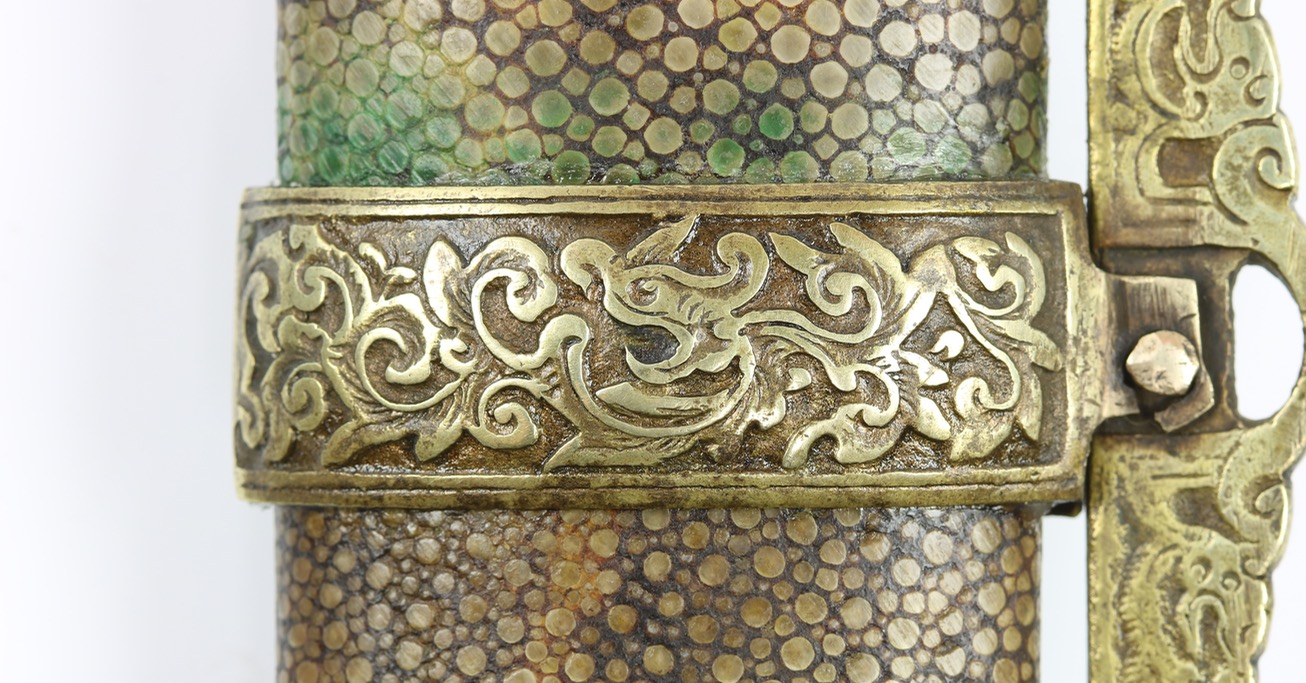
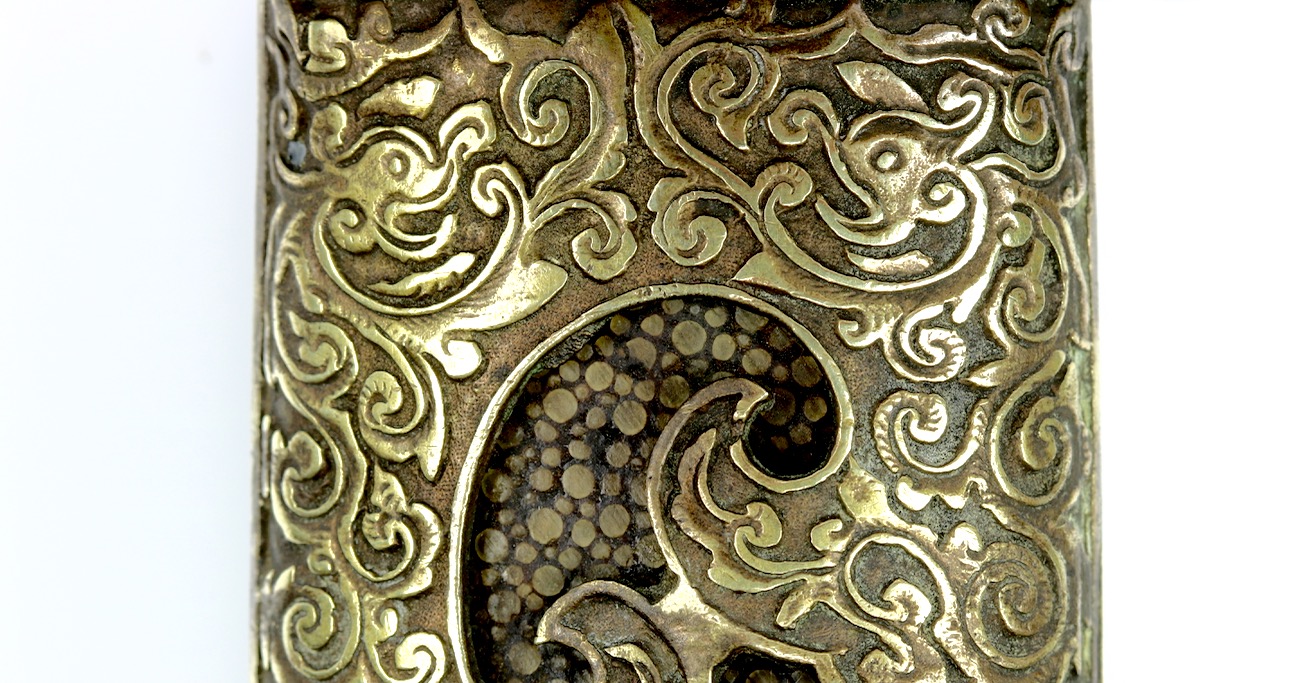
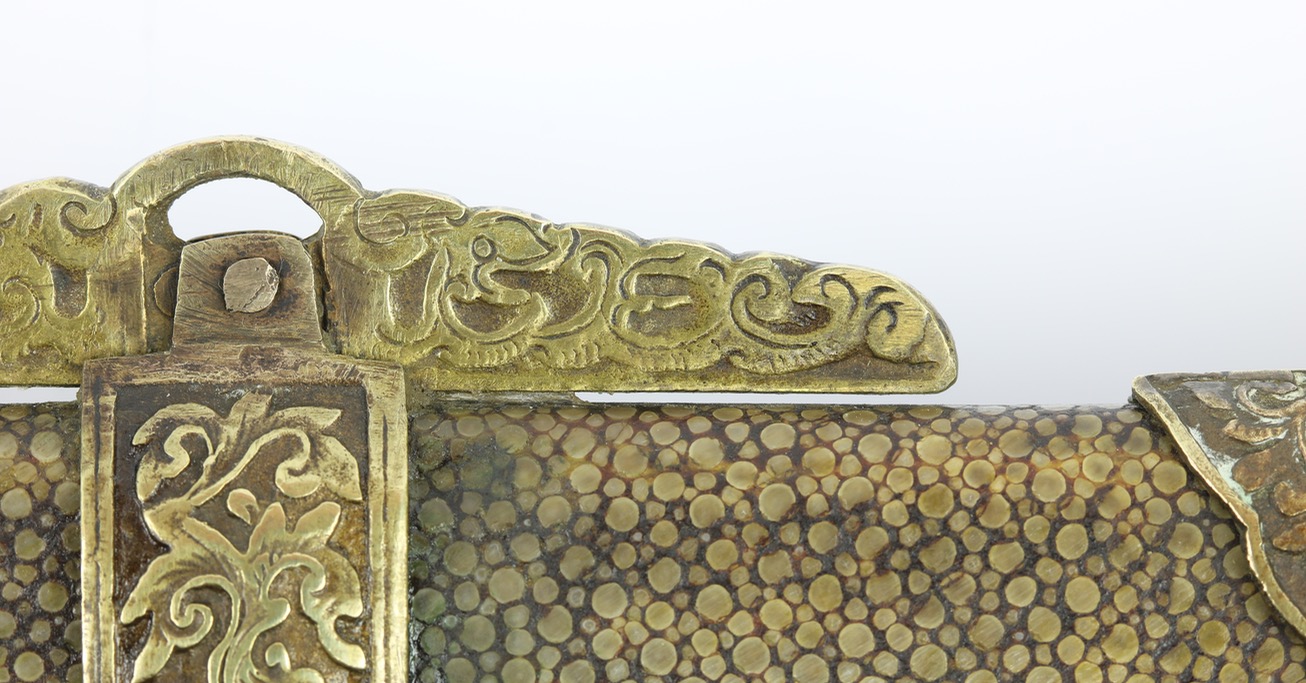


With markings attributing it to the Tongzhou incident and a Japanese surrender tag.
Of classic shape, with a leaf-shaped blade on a socket, connected by a cast bronze base.
A standard pattern Qing military saber, but with the rare addition of a label in Manchu.

